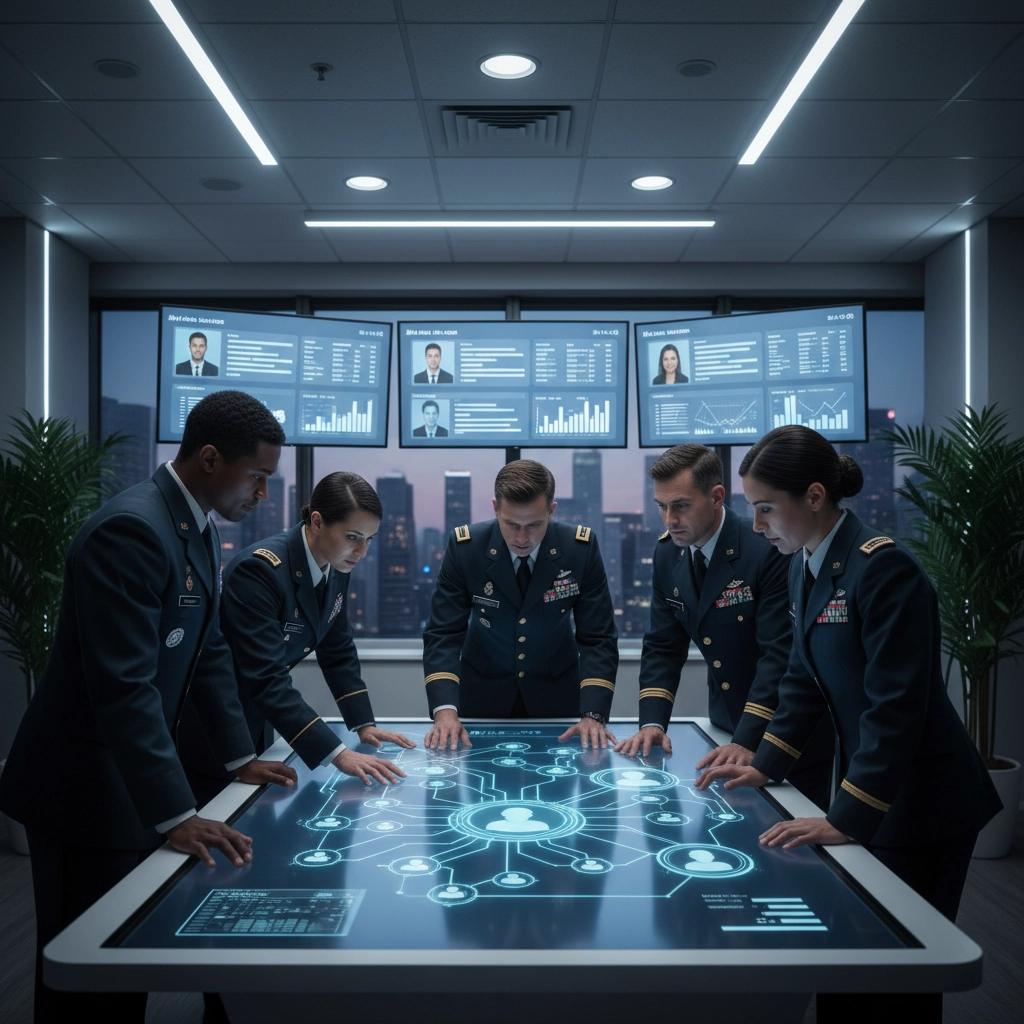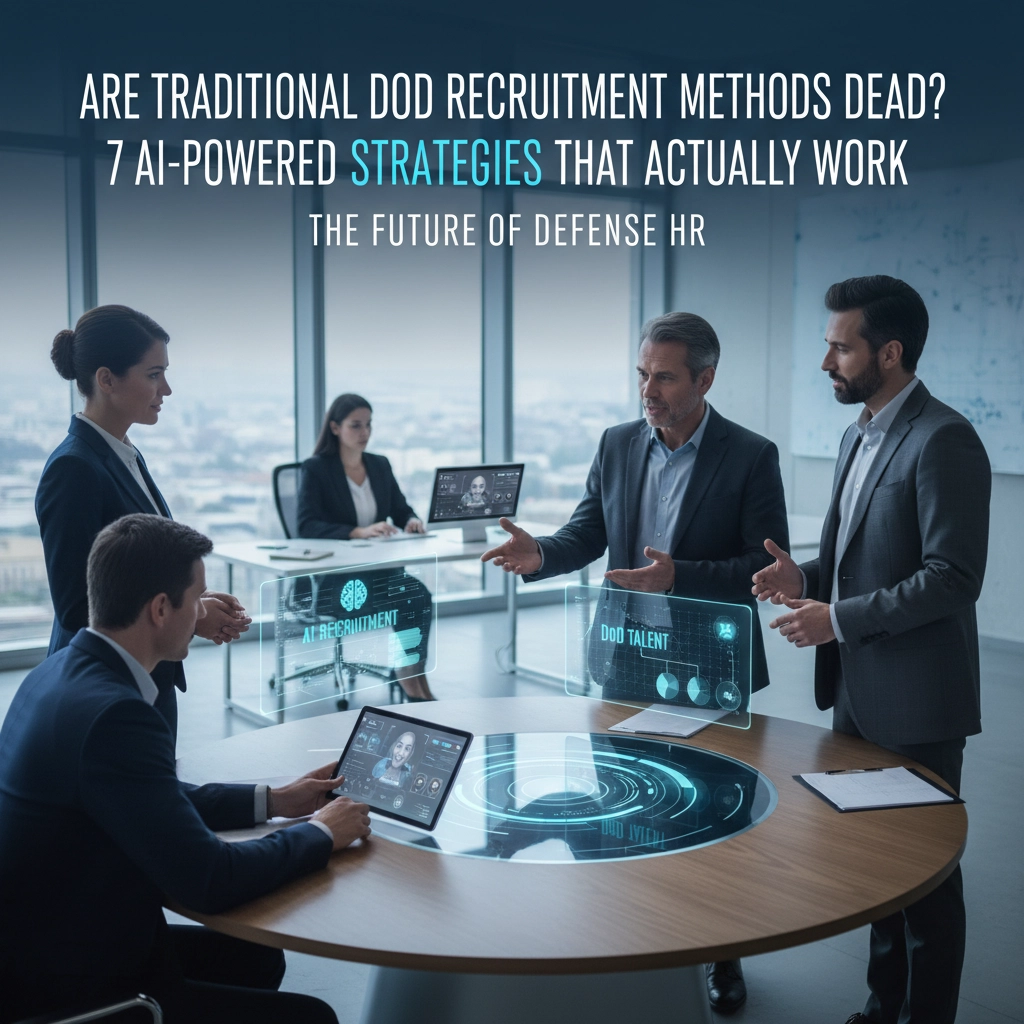The Department of Defense recruitment landscape has undergone substantial transformation in recent years, challenging assumptions about the effectiveness of conventional recruitment methodologies. Traditional DoD recruitment methods are demonstrably not obsolete, as evidenced by a remarkable 14% increase in military enlistment from fiscal year 2022 to 2024, reaching 146,473 new recruits. As of April 2025, all military branches except the Space Force were meeting or exceeding their recruitment targets, with the Army achieving 116% of its established goals.
The establishment of the Military Service Recruitment Task Force represents a strategic acknowledgment of evolving recruitment challenges and opportunities. This initiative demonstrates the DoD's commitment to modernizing recruitment processes while addressing the reality that 77% of young adults face disqualification due to various factors including medical, physical, educational, or behavioral considerations.
Contemporary military recruitment success stems from the integration of advanced technological solutions with established recruitment frameworks. Artificial intelligence has emerged as a transformative force in military recruitment, offering sophisticated capabilities that enhance traditional methods rather than replacing them entirely. The following seven AI-powered strategies represent proven approaches that are reshaping how the Department of Defense identifies, evaluates, and engages potential military personnel.
Strategy 1: Predictive Analytics for Candidate Success Forecasting
Advanced predictive analytics platforms analyze comprehensive datasets to forecast candidate success rates across different military occupational specialties. These systems evaluate educational backgrounds, aptitude test scores, physical fitness metrics, and psychological profiles to generate probability models for training completion and long-term service commitment.

The implementation of predictive modeling enables recruitment officers to allocate resources more efficiently by identifying candidates with the highest likelihood of successful military careers. Machine learning algorithms continuously refine these predictions based on historical performance data, creating increasingly accurate forecasting capabilities that reduce recruitment costs and improve retention rates.
Predictive analytics transforms recruitment from a volume-based approach to a precision-targeted strategy that maximizes both candidate satisfaction and military operational effectiveness.
Strategy 2: Automated Resume Screening and Skills Matching
Intelligent resume screening systems process thousands of applications simultaneously, identifying candidates whose skills and experiences align with specific military requirements. Natural language processing algorithms extract relevant information from civilian job descriptions, educational credentials, and personal statements to create comprehensive candidate profiles.
These automated systems eliminate human bias in initial screening processes while ensuring that qualified candidates are not overlooked due to formatting variations or unconventional career paths. The technology particularly excels at identifying transferable skills from civilian occupations that correspond to military specialties, expanding the pool of potentially suitable candidates.
Strategy 3: AI-Powered Conversational Interfaces for Initial Engagement
Sophisticated chatbot systems provide immediate, personalized responses to recruitment inquiries across multiple digital platforms. These conversational interfaces operate continuously, engaging potential recruits outside traditional business hours and providing instant access to information about military careers, benefits, and application processes.
Advanced natural language understanding enables these systems to address complex questions about military life, deployment schedules, educational opportunities, and career progression paths. The technology maintains detailed conversation logs that help human recruiters understand candidate concerns and preferences when personal contact is established.

Strategy 4: Intelligent Workforce Gap Analysis and Targeting
Machine learning algorithms analyze current military personnel data, retirement projections, and operational requirements to identify specific skill shortages across different branches and specialties. This intelligence drives targeted recruitment campaigns that focus on civilians with relevant technical backgrounds in cybersecurity, artificial intelligence, data science, and other high-demand fields.
The system continuously monitors labor market trends and educational program outputs to predict future talent availability in critical areas. This forward-looking approach enables proactive recruitment strategies that address workforce gaps before they become operational constraints.
Strategy 5: Personalized Multi-Channel Outreach Campaigns
AI-driven marketing platforms create individualized recruitment messages tailored to specific candidate profiles and preferences. These systems analyze social media activity, online behavior patterns, and demographic information to optimize message content, timing, and delivery channels for maximum engagement effectiveness.
Personalization extends beyond basic demographic targeting to include career aspirations, lifestyle preferences, and values alignment. The technology automatically adjusts messaging strategies based on response rates and conversion metrics, continuously improving campaign performance across different audience segments.
Personalized outreach transforms generic military recruitment into targeted career conversations that resonate with individual aspirations and circumstances.
Strategy 6: Virtual Reality Assessment and Training Previews
Immersive virtual reality platforms provide potential recruits with realistic previews of military training environments and job responsibilities. These systems allow candidates to experience simulated military scenarios, equipment operation, and training exercises before making commitment decisions.

VR assessments also enable more accurate evaluation of candidate aptitudes for specific military roles by measuring performance in controlled, standardized environments. The technology provides objective metrics on spatial reasoning, decision-making under pressure, and technical skill acquisition that complement traditional testing methods.
Strategy 7: Social Media Sentiment Analysis and Reputation Management
Advanced sentiment analysis tools monitor social media platforms and online forums to track public perception of military service and identify influential voices within target demographics. These systems analyze millions of posts, comments, and discussions to understand recruitment barriers and opportunities within specific communities.
The technology enables recruitment teams to address misconceptions about military service through targeted content strategies and community engagement initiatives. Real-time monitoring capabilities allow for immediate response to negative sentiment trends or viral content that might impact recruitment efforts.
Implementation Considerations and Future Developments
The successful deployment of AI-powered recruitment strategies requires careful integration with existing military recruitment infrastructure and personnel training programs. Data privacy and security considerations are paramount when implementing systems that process personal information from potential recruits.
Continuous algorithm refinement and bias detection protocols ensure that AI systems support equitable recruitment practices while maintaining operational effectiveness. Regular audits and performance assessments validate that technological solutions are achieving intended outcomes without introducing unintended discrimination or exclusionary practices.
The evolution of military recruitment technology continues to accelerate, with emerging capabilities in machine learning, natural language processing, and predictive modeling offering additional opportunities for recruitment optimization. These developments suggest that the integration of artificial intelligence with traditional recruitment methods will deepen rather than diminish in the coming years.
The Department of Defense recruitment success demonstrates that strategic technology adoption enhances rather than replaces fundamental recruitment principles. By leveraging AI-powered tools to improve efficiency, accuracy, and candidate experience, military recruitment organizations are positioned to meet evolving workforce challenges while maintaining the high standards essential for national defense operations.

